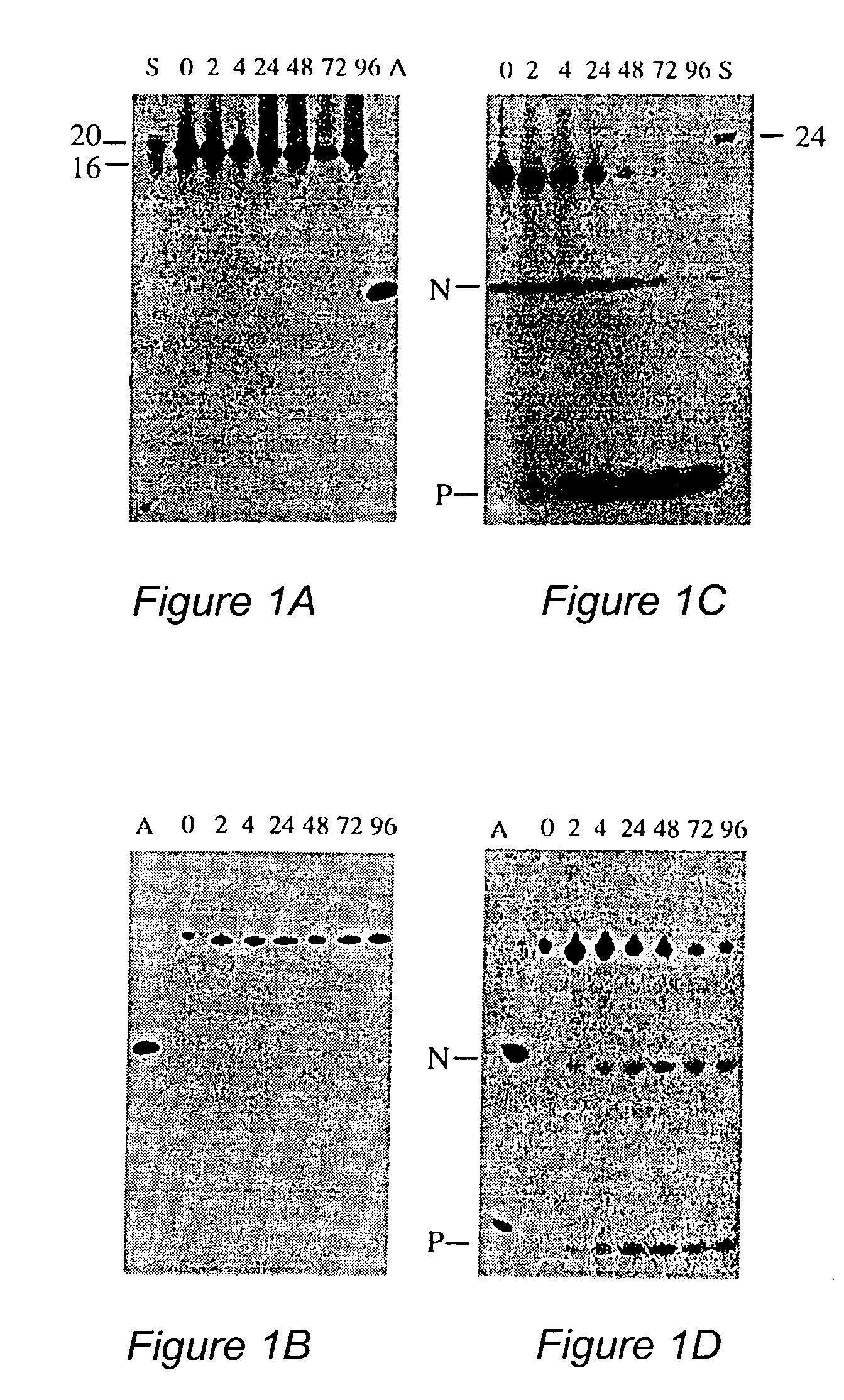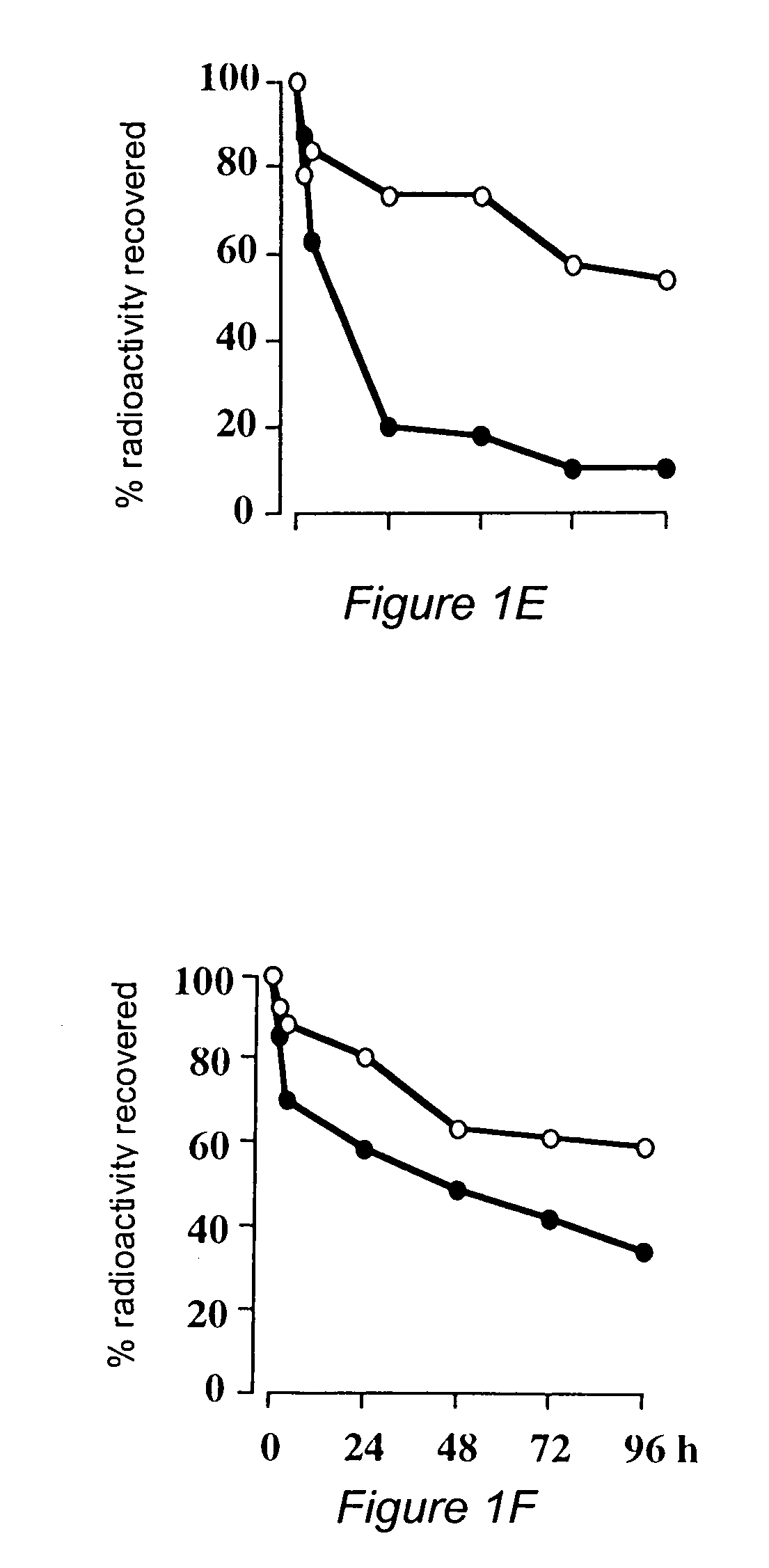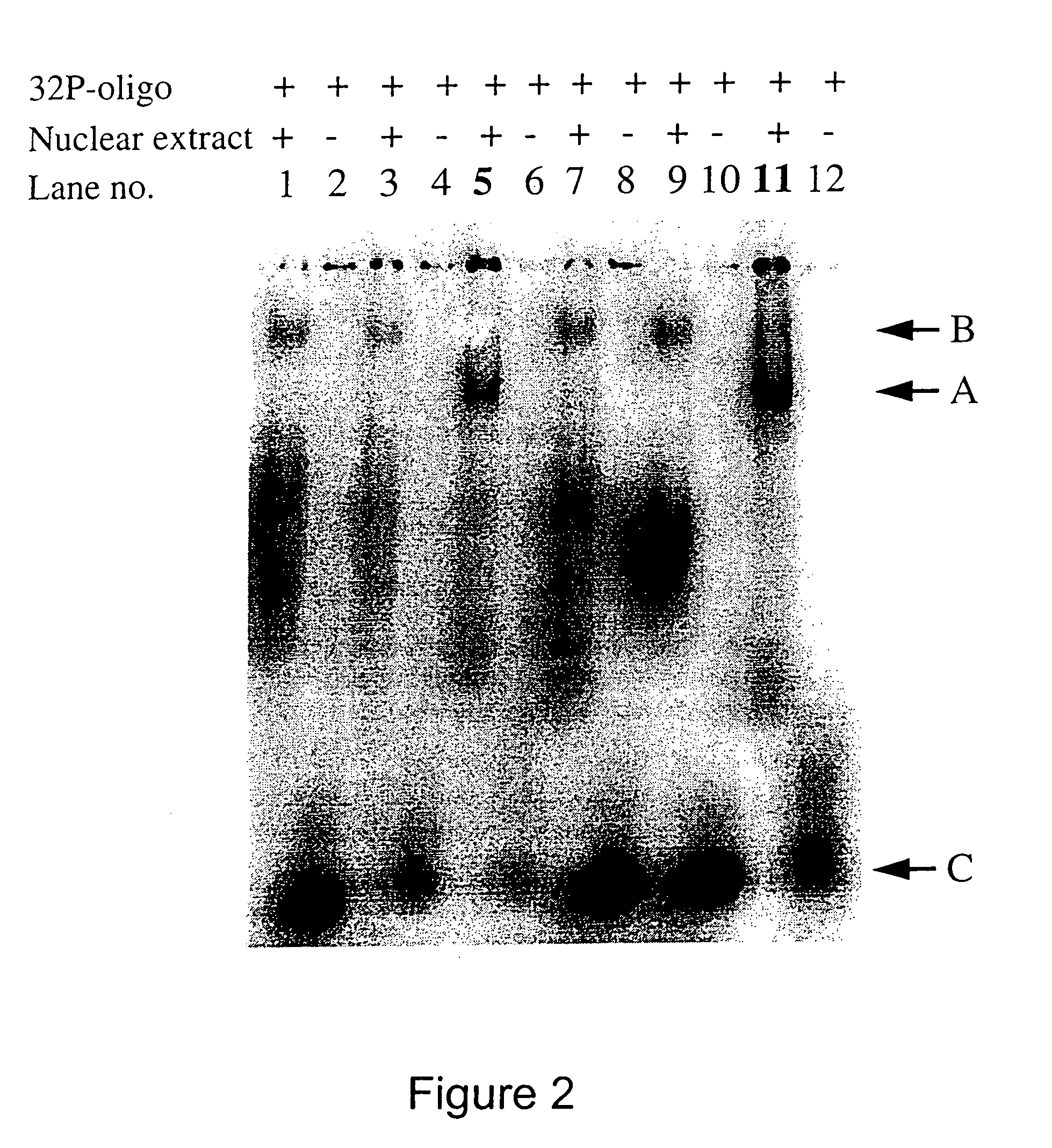G-rich oligo aptamers and methods of modulating an immune response
a technology of g-rich oligo aptamers and immune response, applied in the field of immunology, to achieve the effect of modulating t cell responses
- Summary
- Abstract
- Description
- Claims
- Application Information
AI Technical Summary
Benefits of technology
Problems solved by technology
Method used
Image
Examples
examples
Oligonucleotides
[0041]Oligodeoxynucleotides were synthesized on an automated DNA synthesizer (Applied Biosystems model 394) using standard phosphoramidite chemistry. β-cyanoethylphosphoramidites, synthesis reagents and CPG polystyrene columns were purchased from Applied Biosystems (ABI, Foster City, Calif.). 3′-Amino-Modifier C3 CPG columns were purchased from Glen Research (Sterling, Va.). For phosphorothioate oligonucleotides, the standard oxidation bottle was replaced with tetraethylthiuram disulfide / acetonitrile, and the standard ABI phosphorothioate program was used for the stepwise addition of phosphorothioate linkages. After cleavage from the controlled pore glass column, the protecting groups were removed by treating the oligonucleotides with concentrated ammonium hydroxide at 55° C. for 8 hours. The oligonucleotides were purified by HPLC using a reverse phase semiprep C8 column (ABI). Following cleavage of the DMT protecting group, treatment with 80% acetic acid and ethanol...
PUM
| Property | Measurement | Unit |
|---|---|---|
| pH | aaaaa | aaaaa |
| pH | aaaaa | aaaaa |
| concentration | aaaaa | aaaaa |
Abstract
Description
Claims
Application Information
 Login to View More
Login to View More - R&D
- Intellectual Property
- Life Sciences
- Materials
- Tech Scout
- Unparalleled Data Quality
- Higher Quality Content
- 60% Fewer Hallucinations
Browse by: Latest US Patents, China's latest patents, Technical Efficacy Thesaurus, Application Domain, Technology Topic, Popular Technical Reports.
© 2025 PatSnap. All rights reserved.Legal|Privacy policy|Modern Slavery Act Transparency Statement|Sitemap|About US| Contact US: help@patsnap.com



